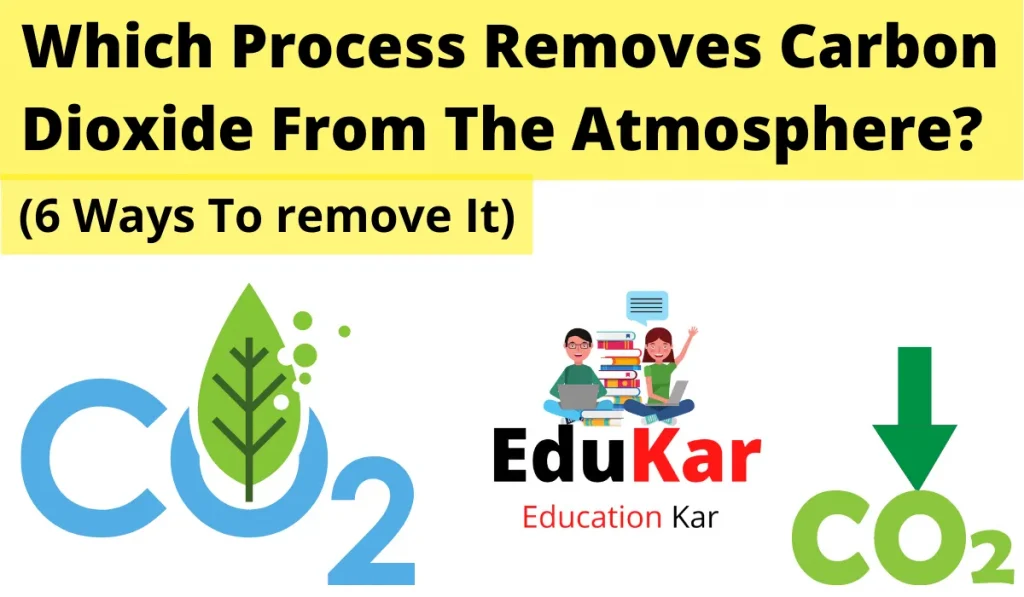Contents

Photosynthesis
Photosynthesis is a process in which carbon dioxide removed naturally — and trees are mainly good at storing carbon removed from the atmosphere by photosynthesis.
Hence the Industrial Revolution, humans have emitted more than 2,000 gigatons of carbon dioxide into the atmosphere which is a very huge amount.
This thickening blanket of heat-trapping greenhouse gases sources the global warming we experience today. If nothing changes climate affect such as forest fires, stifling heat waves & damaging sea level rise will only continue to intensify.
In fact, most climate model scenarios expose that we’ll need to remove billions of metric tons of carbon dioxide annually by 2050, while also ramping up emissions reductions.
Carbon removal can take various forms, from latest technologies to land management practices. The big question is whether these approaches can deliver carbon removal at the huge scale needed in the coming decades.
Their are many ways but here are mainly six options for removing carbon from the atmosphere:
I) Forests
Photosynthesis is a process in which carbon dioxide removed naturally — and trees are mainly good at storing carbon removed from the atmosphere by photosynthesis. Amplifying, restoring and managing forests to encourage more carbon uptake can hold the power of photosynthesis, converting carbon dioxide in the air into carbon kept in wood and soils.
II) Farms
Soils naturally keep carbon, but agricultural soils are running a big deficit due to thorough use. Because agricultural land is so costly — more than 901 million acres in the United States alone—even small expansion in soil carbon per acre.
Building soil carbon is helpful for farmers and ranchers, too, as it can accelerate soil health and crop yields. Integrating trees on farms can also reduce carbon while providing other benefits, like forage and shade for livestock.
Scientists are also inventing crops with deeper roots, making them more resistant to drought while depositing more and more carbon into the soil.
III) Bio-energy with Carbon Capture and Storage (BECCS)
Bio-energy with Carbon Capture and Storage (BECCS) is differently to use photosynthesis to combat climate activity. However, it’s far more complicated than planting trees or managing soils — and it doesn’t always work for the climate.
BECCS is that the method of using biomass for energy within the economic, power or transportation sectors; capturing its emissions before they are released back to the atmosphere; then keeping that captured carbon either underground or in long-lived belonging like concrete. If BECCS causes more biomass to grow than would otherwise, or stores more carbon instead of releasing it back to the atmosphere, it can provide net carbon removal.
But it’s not always straightforward to calculate whether those conditions are met. Furthermore if BECCS relies on bioenergy crops, it could supersede food production or natural ecosystems, removing climate benefits and exacerbating food insecurity and ecosystem loss.
IV) Direct Air Capture
Direct air capture is that the method of chemically scrubbing greenhouse emission directly from the ambient air, and then storing it either underground or in long-lived products. This new technology is analogous to the carbon capture and storage technology accustomed capture emissions from sources like power plants and industrial facilities. The difference is that direct air capture detach excess carbon directly from the atmosphere, instead of capturing it at the source.
It is relatively straightforward to live and account for the climate benefits of direct air capture, and its potential scale of evolution is big. But the technology remains expensive and energy-intensive.
Multiple companies have already evolve direct air capture systems, despite the near absence of public research and evolution spending on the technology for several years. In late 2019, however, Congress appropriated $60 million for carbon removal technologies, including a minimum of $35 million for direct air capture, an vital step toward the extent of investment needed to rescale up development efforts.
V) Carbon Mineralization
Some minerals naturally behave with CO2, turning out carbon from a gas into a solid. The process is mainly referred to as carbon mineralization or enhanced weathering, and it inherently happens very slowly, over hundreds or may be up-to thousands of years.
But scientists are calculating how to speed up the carbon mineralization process, mostly by enhancing the exposure of these minerals to CO2 in the air or ocean. That could mean pumping alkaline spring water from below ground to the surface where minerals can react with the air; moving air through huge deposits of mine tailings — rocks remaining from mining operations — that holds the right mineral composition; crushing or evolving enzymes that chew up mineral deposits to increase their surface area; and finding ways to weather definite industrial byproducts, like kiln dust, fly ash or iron and steel slag.
Carbon mineralization can also be used as a way to keep CO2 by injecting into suitable rock kinds where it reacts to form a solid carbonate. Additionally, some applications could remove conventional production methods for materials like concrete, which is used at a multi-billion ton calibration globally.
Scientists have shown that carbon mineralization is possible and a handful of start-ups are already evolving mineralization-based building materials, but there is a lot of work to be done to map out cost-effective and prudent applications for scaled evolution.
VI) Ocean-Based Concepts
A number of ocean-based carbon removal concepts have been expected to leverage the ocean’s capacity to keep carbon and identify approaches beyond only land-based applications. However, nearly all of them are at starting stages of development and need more research, and in some cases pilot testing to know whether they are suitable for investment given social, potential ecological and governance impacts.
Each approach focus to accelerate natural carbon cycles in the ocean. They could add leveraging photosynthesis in coastal plants, seaweed or phytoplankton; including certain minerals to increase storage of dissolved bicarbonate; or running an electric current through seawater to help remove CO2.
The Future of ‘Carbon Removal’
The most cost-effective and lowest risk strategy for building out carbon removal capacity include evolving and deploying a variety of approaches in tandem.
Each carbon extraction approach offers promise & challenges but capturing and keeping CO2 already in the air must be part of our climate change strategy in the United States and around the world to keep away from dangerous levels of global warming.

![Biology Class 10 Very important [Questions &Answers] Biology Important Questions with Answers class 10](https://edukar.in/wp-content/uploads/2022/09/Biology-Important-Questions-with-Answers-class-10-1024x597.webp)

![Carbon And Its Compounds Important Questions [Class 10] Carbon And Its Compounds Important Questions Class 10](https://edukar.in/wp-content/uploads/2022/09/Carbon-And-Its-Compounds-Important-Questions-Class-10-1024x597.webp)




![What is Sublimation with Examples? [Class 9,10th,11th] What is Sublimation with Examples](https://edukar.in/wp-content/uploads/2023/03/What-is-Sublimation-with-Examples.webp)

![Zoology Important Questions [Class 11th-English medium] Zoology Important Questions class 10 english medium](https://edukar.in/wp-content/uploads/2022/09/Zoology-Important-Questions-class-10-english-medium-1024x597.webp)




